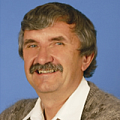As of 01.11.2022
Name of the project: Orogenesis: formation and growth of continents and supercontinents
Project objective:
1. Creation of a new high-profile center to study geochronology, geochemistry and paleomagnetism at the Institute of the Earth's Crust of the Siberian Branch of the Russian Academy of Sciences.
2. Development of a number of paleogeographic models of formation, development of accretion growth of the Siberian craton in the global context, its collisions with the Baltic and terrains of Western Siberia that has lead to formation of Eurasia as well as models of collision and accretion orogenes related to this and ore formation related to them, processes of formation and development of sedimentary basins and hydrocarbon deposits.
|
Hosting organization
|
Field of studies
|
City
|
Invited researcher
|
Time span of the project
|
|---|---|---|---|---|
|
Fluxes of potentially toxic elements and substances in river basins: research methodology, quantitative assessment and prediction
M.V.Lomonosov Moscow State University - (MSU) |
Earth studies and related Ecological sciences |
Moscow |
Konoplev Aleksei Vladimirovich
Russia |
2024-2028 |
|
Macromolecular design of polymeric materials for medical and technical purposes
I.M. Sechenov First Moscow State Medical University - (Sechenov University) |
Earth studies and related Ecological sciences |
Moscow |
Kostjuk Sergei Viktorovich
Belarus |
2024-2028 |
|
Laboratory «Soil Health»
Southern Federal University - (SFedU) |
Earth studies and related Ecological sciences |
Rostov-on-Don |
Wong Ming Hung
, United Kingdom |
2022-2024 |




